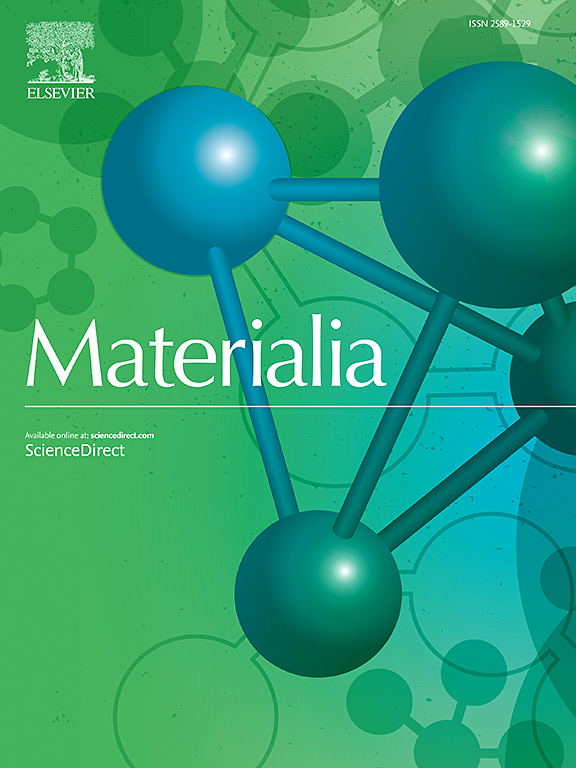Methodical approach to interface design: Role of sizing in the micro-mechanical performance and durability of basalt fibers-based composites
IF 2.9
Q2 MATERIALS SCIENCE, MULTIDISCIPLINARY
引用次数: 0
Abstract
Basalt fibers are renowned for their outstanding mechanical performance and promising end-of-life recyclability, while maintaining adequate performance compared to glass fibers. While their use is expanding, a deep comprehension of the fiber surface chemistry and particularly sizing is crucial. This thin layer, mainly made of film formers, organosilanes, among other components, governs the interface properties and thus the global performance of fiber-reinforced polymer composites. This study investigates the surface properties of basalt fibers treated with a range of film former, employing advanced surface characterization techniques. These including XPS, TGA, SEM-EDX, wettability, and five-parameter Weibull statistical analysis. The results show that the film former, polymeric versus oligomeric, strongly influences surface morphology, coverage, and flaw distribution. Oligomeric sizing, such as epoxy-based, achieves a coating with a narrower interfacial shear strength distribution. Polymeric film formers, generate thicker and more heterogeneous coatings, exhibiting dynamic rearrangements under hygrothermal conditions, showing a time-dependent healing effect. Its status modifies the surface key properties for further adhesion with polymer matrices. Beyond the insights into sizing-dependent surface performance, this work proposes a structured framework for characterizing and interpreting fiber surface to understand composite performance. By mapping different properties, the study encourages the transition from empirical, trial-and-error material development, still prevalent in industrial settings, towards more predictive, data-informed composite design. Our findings aim to contribute to a collaborative and continuous effort concerning interphase engineering in the growing field of basalt fiber composites. By positioning on fiber surface understanding, this work looks for unlocking the full potential of polymer-reinforced materials.

界面设计的方法:浆料在玄武岩纤维基复合材料微力学性能和耐久性中的作用
玄武岩纤维以其卓越的机械性能和有希望的报废回收性而闻名,同时与玻璃纤维相比保持足够的性能。虽然它们的用途正在扩大,但对纤维表面化学的深刻理解,特别是上浆是至关重要的。这种薄层主要由成膜剂、有机硅烷等组成,控制着纤维增强聚合物复合材料的界面性能和整体性能。本研究采用先进的表面表征技术,研究了玄武岩纤维经一系列成膜剂处理后的表面特性。其中包括XPS、TGA、SEM-EDX、润湿性和五参数威布尔统计分析。结果表明,成膜剂(聚合物和低聚物)对表面形貌、覆盖度和缺陷分布有很大影响。低聚体施胶,如环氧基,可获得具有较窄界面剪切强度分布的涂层。聚合物成膜剂可以产生更厚、更不均匀的涂层,在湿热条件下表现出动态重排,显示出随时间变化的愈合效果。它的状态改变了与聚合物基质进一步粘附的表面关键特性。除了对尺寸依赖表面性能的见解之外,这项工作还提出了一个结构化框架,用于表征和解释纤维表面,以了解复合材料的性能。通过映射不同的属性,该研究鼓励从经验主义、试错法的材料开发(在工业环境中仍然普遍存在)向更具预测性、基于数据的复合材料设计转变。我们的研究结果旨在为不断发展的玄武岩纤维复合材料的界面工程领域的合作和持续努力做出贡献。通过对纤维表面的理解,这项工作寻求释放聚合物增强材料的全部潜力。
本文章由计算机程序翻译,如有差异,请以英文原文为准。
求助全文
约1分钟内获得全文
求助全文
来源期刊

Materialia
MATERIALS SCIENCE, MULTIDISCIPLINARY-
CiteScore
6.40
自引率
2.90%
发文量
345
审稿时长
36 days
期刊介绍:
Materialia is a multidisciplinary journal of materials science and engineering that publishes original peer-reviewed research articles. Articles in Materialia advance the understanding of the relationship between processing, structure, property, and function of materials.
Materialia publishes full-length research articles, review articles, and letters (short communications). In addition to receiving direct submissions, Materialia also accepts transfers from Acta Materialia, Inc. partner journals. Materialia offers authors the choice to publish on an open access model (with author fee), or on a subscription model (with no author fee).
 求助内容:
求助内容: 应助结果提醒方式:
应助结果提醒方式:


